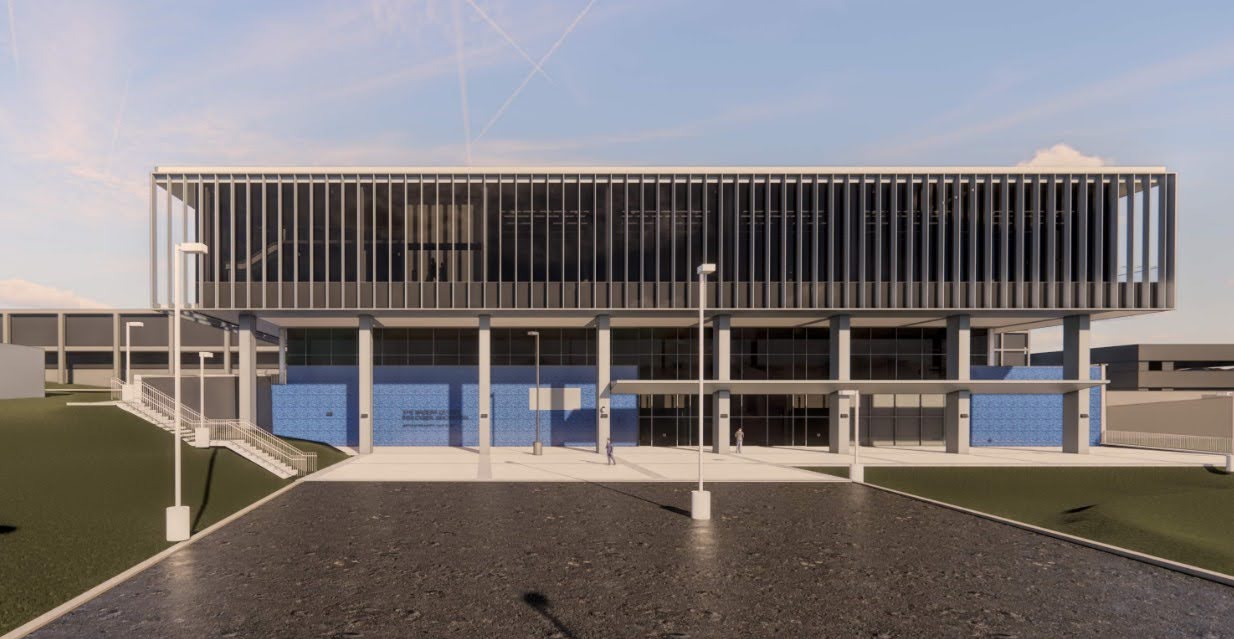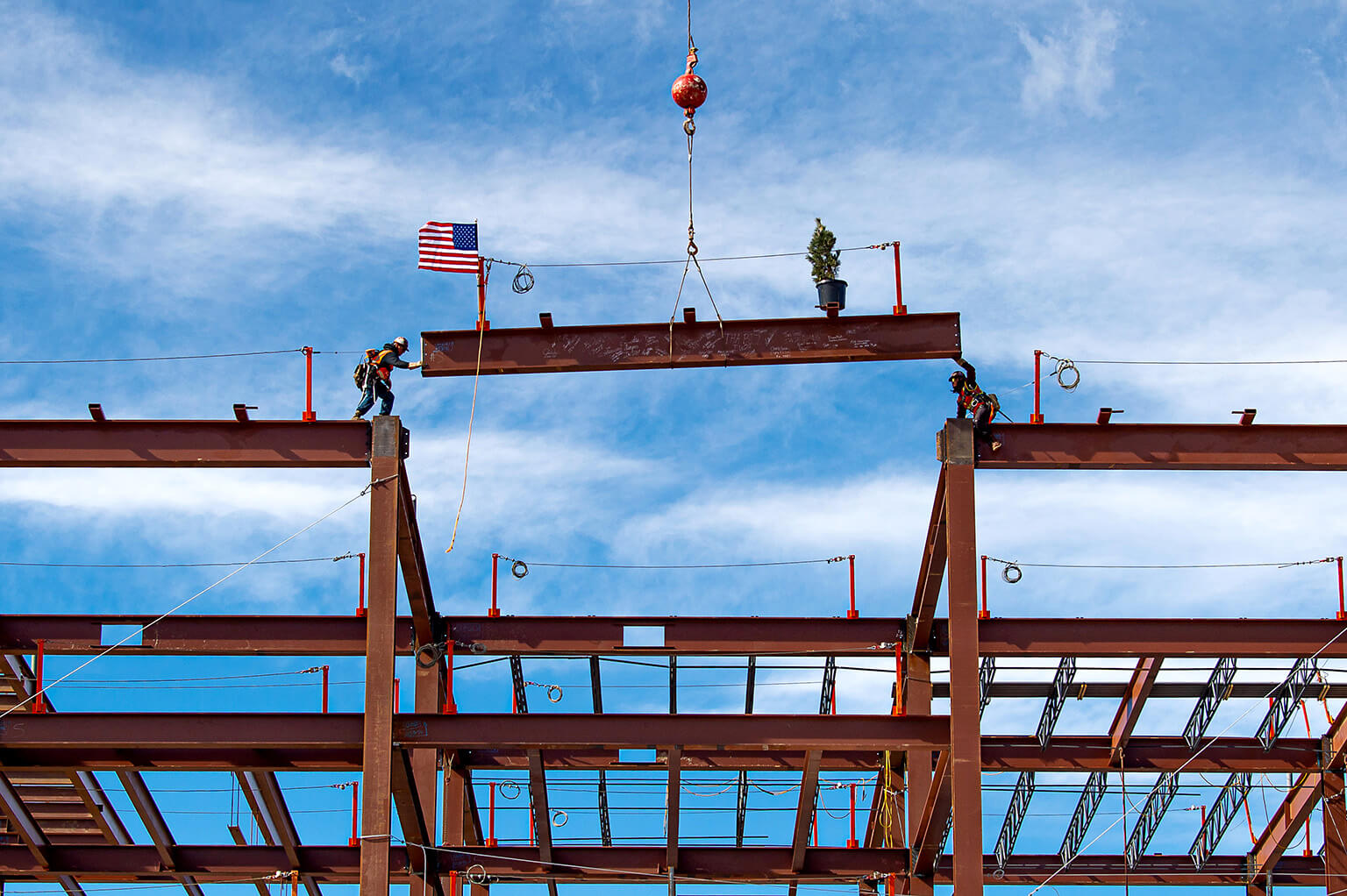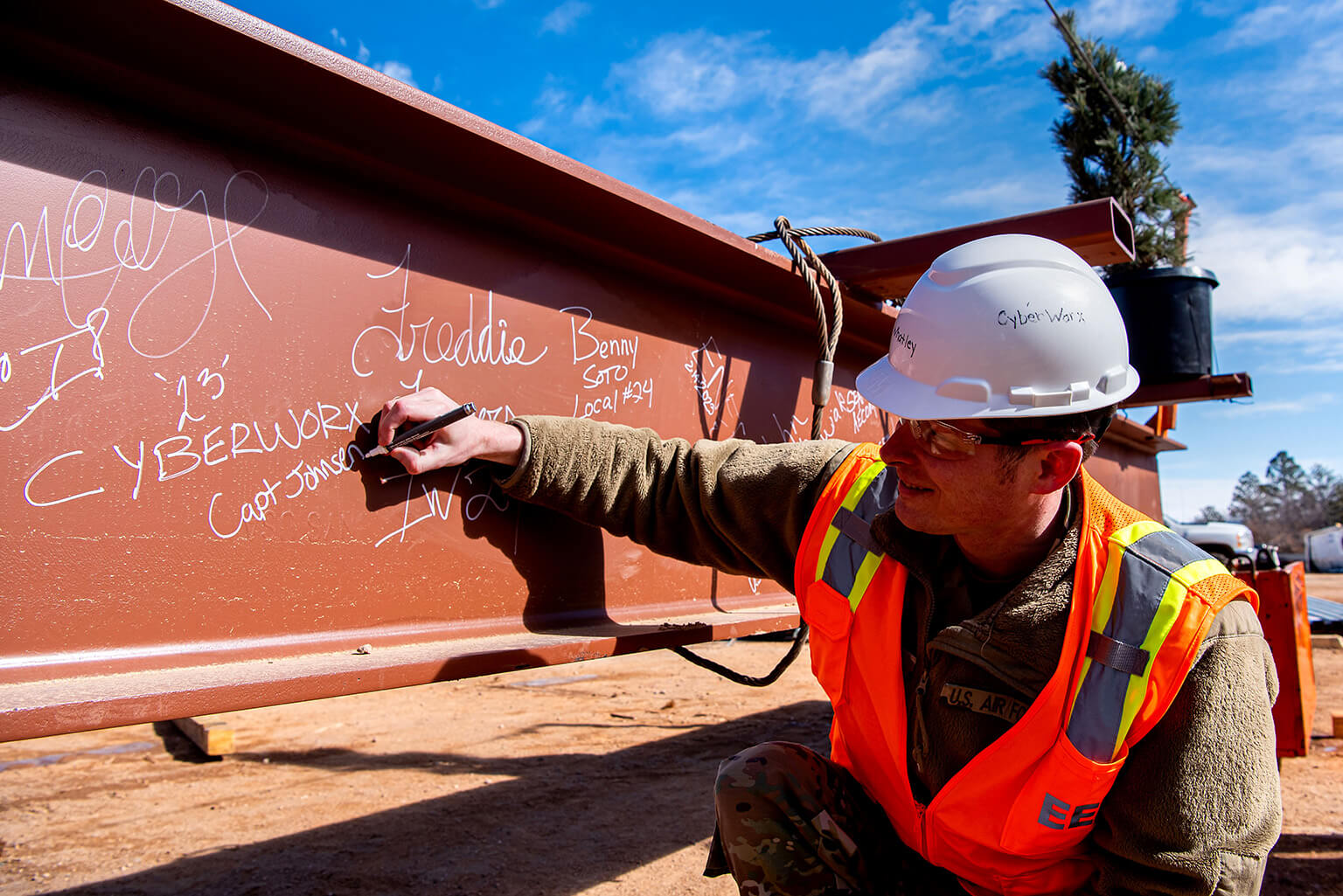Academy’s Madera Cyber Innovation Center construction in full swing
 An artist’s rendering depicts the U.S. Air Force Academy’s Madera Cyber Innovation Center and its architecture. Academy officials collaborated with multiple organizations including the Air Force Academy Foundation to sponsor the $58 million dollar facility, expected to be ready by the 2024 fall semester. The building will allow cadets to stay at the forefront of cyber innovation and problem-solving. (Courtesy photo)
An artist’s rendering depicts the U.S. Air Force Academy’s Madera Cyber Innovation Center and its architecture. Academy officials collaborated with multiple organizations including the Air Force Academy Foundation to sponsor the $58 million dollar facility, expected to be ready by the 2024 fall semester. The building will allow cadets to stay at the forefront of cyber innovation and problem-solving. (Courtesy photo)
U.S. Air Force Academy Strategic Communications
U.S. AIR FORCE ACADEMY, Colo. – The U.S. Army Corps of Engineers and regional contractors are underway toward finishing a state-of-the-art construction project that U.S. Air Force Academy officials expect to be ready for the 2024 fall semester.
The Madera Cyber Innovation Center, a $58 million facility named in honor of Academy graduate Paul Madera, will bolster cadet’s ability to remain at the forefront of innovation, according to Col. Judson Dressler, Academy permanent professor and head of the Department of Computer and Cyber Sciences.
“The Madera Cyber Innovation Center positions the Academy as an innovation hub, revolutionizing the employment of cyber and artificial intelligence technologies to ready cadet leaders for the future fight,” said Dressler. “The collaboration space will bring academia, industry and military operators together to educate and train the Air and Space Forces’ future officers as forward-thinking leaders in advanced technological warfare.”
Multiple organizations and agencies participated in the planning, design, administration and building of the three-story, nearly 49,000-square-foot facility. Thirty million dollars of U.S. government military construction funds sponsored 33,000 square feet and $28 million of donations financed approximately 16,000 square feet. Combined, the newest addition to the cadet area will have high-tech classrooms, labs, research and design space and more.
“We’re very proud of the ability to deliver this capability to the Academy and do it with the partnership of the [Air Force Academy] Foundation, the corps and the Air Force Civil Engineer Center,” said Carlos Cruz-Gonzalez, the Academy’s director of logistics, engineering and force protection. “This is a great example of a public-private partnership of us taking federal funding for the military construction program to meet the basic mission requirements of the building and then partner with the foundation and use their funding to provide the margin of excellence that makes the facility that much better, that much more effective for the purposes of the program.”
The Army Corps of Engineers ensures the project meets Air Force requirements while overseeing the design build contractor, according to Benjamin Alter, the Academy’s Army Corps of Engineers office resident engineer.
“It’s a very complex facility,” said Alter. “We’ve been working with the foundation and the whole project team to incorporate several enhancements to the facility.”
Alter mentioned a glass curtain wall, spiral staircase and a secure area as facility enhancements while minimizing delays.
“The project is about one-third complete,” said Alter. “Construction of the structured steel is nearing completion, while mechanical, electrical and plumbing activities are ramping up on-site.”
Academy architect, Duane Boyle, underlined a team solution to keep the project within budget by making an audible to the building’s orientation during the planning phase.
“Originally, it ran in an east-to-west direction along the south side of Stillman Field, but that was over budget,” said Boyle. “We actually turned the building 90 degrees and put it at its current location, which significantly brought the cost down and saved the quality of the project. That was a big plus for us.”
Last month, Academy, USACE, AFCEC and contractor representatives celebrated a construction milestone during a topping off ceremony that signified the completion of the Madera Cyber Innovation Center’s outer steel structure and symbolized bringing the building to life, according to Boyle who emphasized the building’s importance to the Academy’s future.
“This is our next step toward a Science, Technology, Engineering and Mathematics-core campus,” said Boyle. “We have Gregory Hall and now the Madera Cyber Innovation Center under construction which will serve as a great addition for cadets and to the cadet area, allowing us to advance our STEM capabilities.”
Academy officials expect the cyber center, slated for completion by 2024, to serve more than 1,400 cadets and also military and civilian organizations. These spaces will host programs to educate cyber operators and to train future Air Force and Space Force officers.
 Civilian contractors place the final steel beam onto the Madera Cyber Innovation Center’s outer steel structure during a topping-off ceremony at the U.S. Air Force Academy, Colo., Feb. 14, 2023. The ceremony signified a construction milestone and symbolized bringing the building to life according to Academy architect, Duane Boyle. The cyber center will educate and train future Air Force and Space Force officers in advanced technological warfare. (U.S. Air Force photo by Trevor Cokley)
Civilian contractors place the final steel beam onto the Madera Cyber Innovation Center’s outer steel structure during a topping-off ceremony at the U.S. Air Force Academy, Colo., Feb. 14, 2023. The ceremony signified a construction milestone and symbolized bringing the building to life according to Academy architect, Duane Boyle. The cyber center will educate and train future Air Force and Space Force officers in advanced technological warfare. (U.S. Air Force photo by Trevor Cokley)
 Capt. Nathan Johnsen, Air Force Academy CyberWorx program manager, signs the final steel beam that supports the Madera Cyber Innovation Center’s outer steel structure during a topping off ceremony at the Air Force Academy, Colo., Feb. 14, 2023. The cyber center, named after Academy graduate Paul Madera, will serve nearly 1,400 cadets and will educate and train future Air Force and Space Force officers in advanced technological warfare. (U.S. Air Force photo by Trevor Cokley)
Capt. Nathan Johnsen, Air Force Academy CyberWorx program manager, signs the final steel beam that supports the Madera Cyber Innovation Center’s outer steel structure during a topping off ceremony at the Air Force Academy, Colo., Feb. 14, 2023. The cyber center, named after Academy graduate Paul Madera, will serve nearly 1,400 cadets and will educate and train future Air Force and Space Force officers in advanced technological warfare. (U.S. Air Force photo by Trevor Cokley)